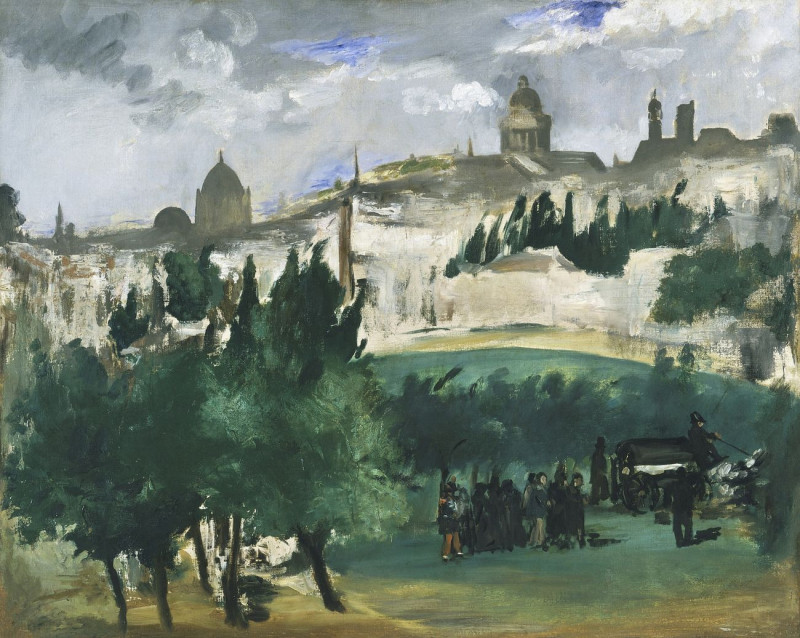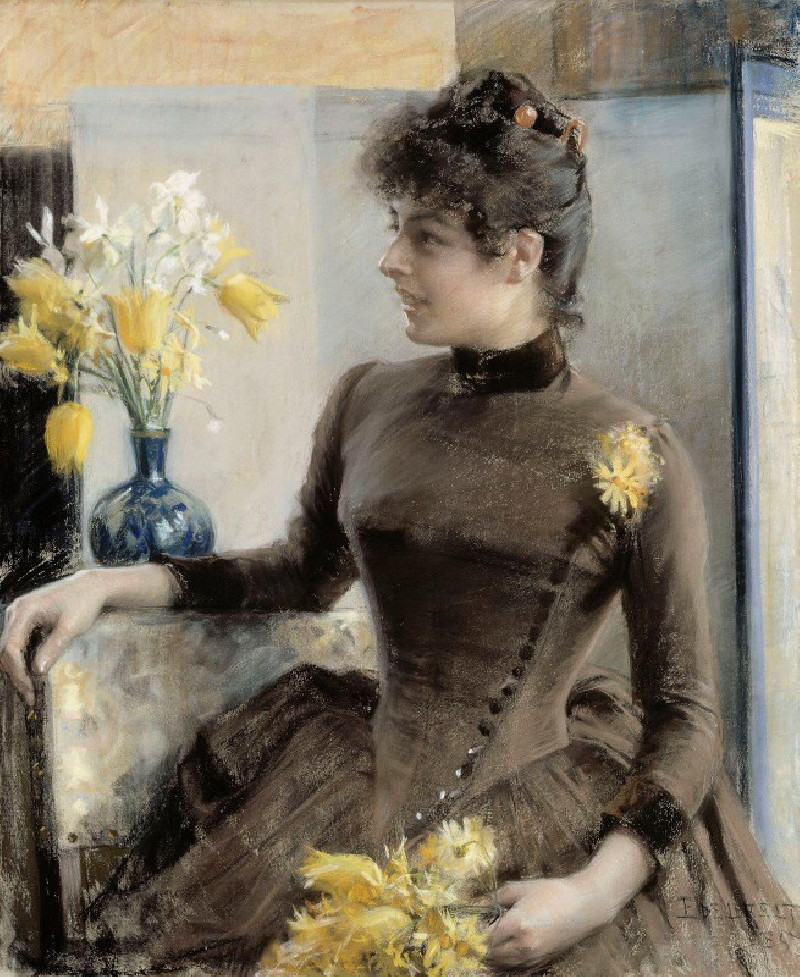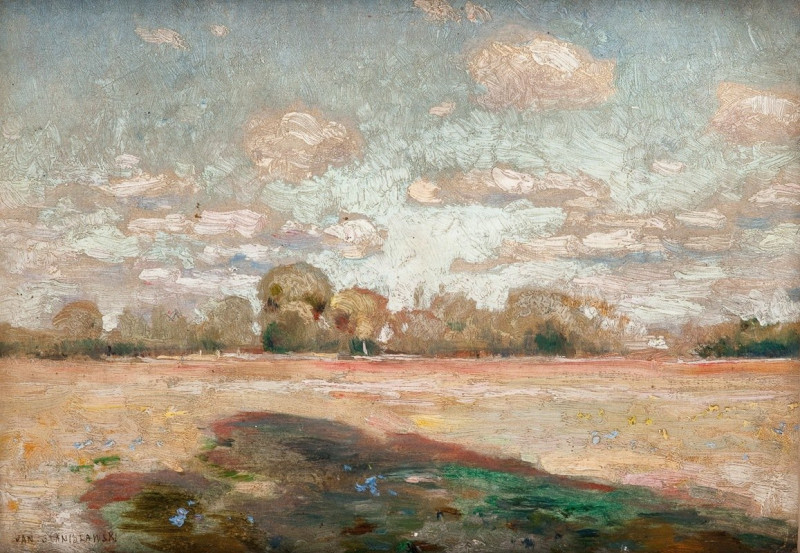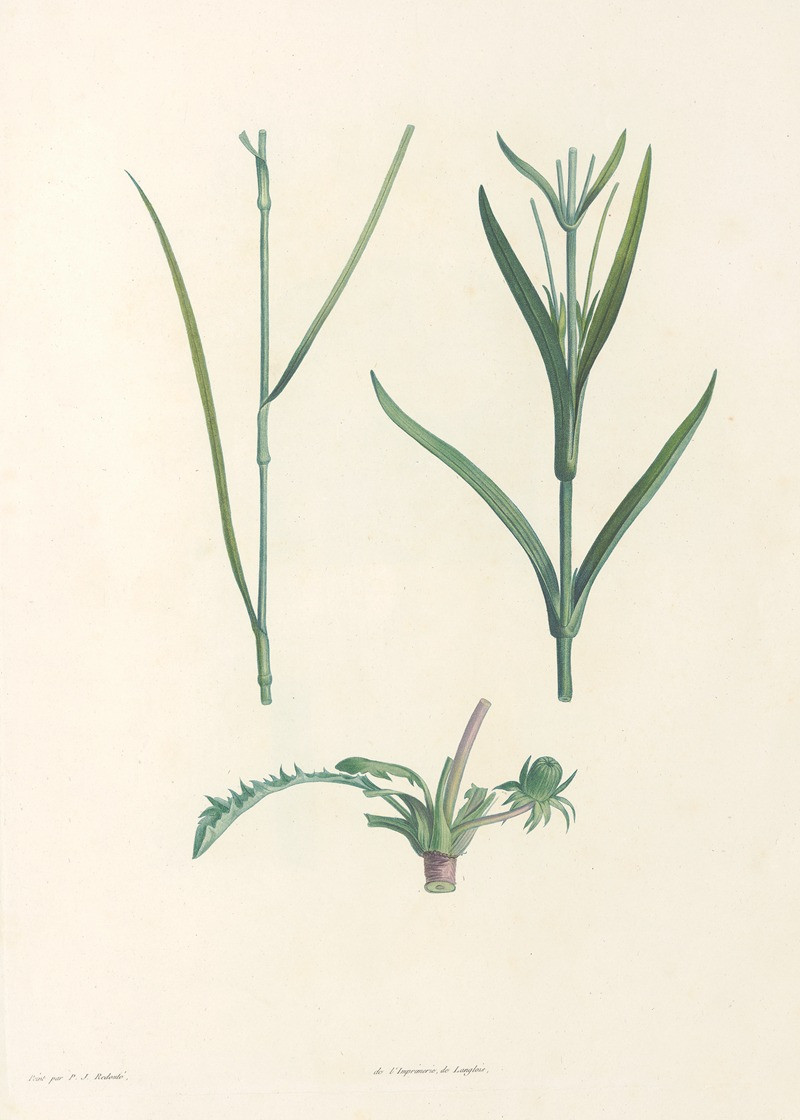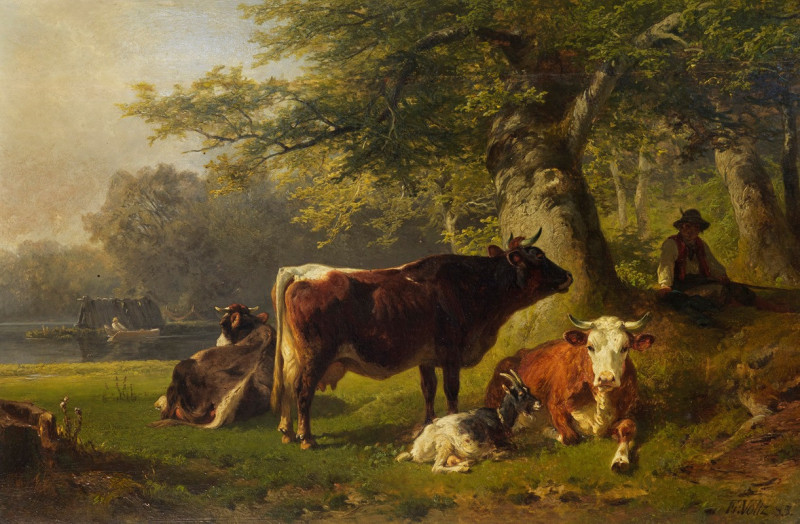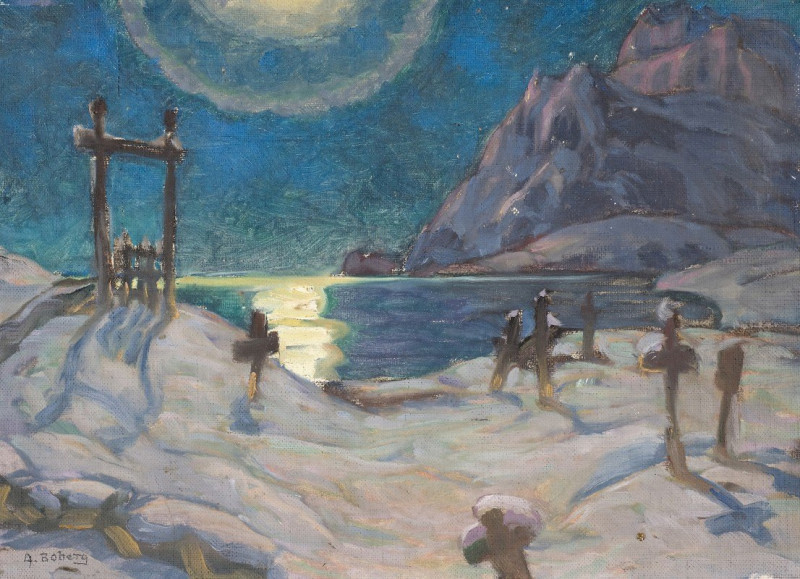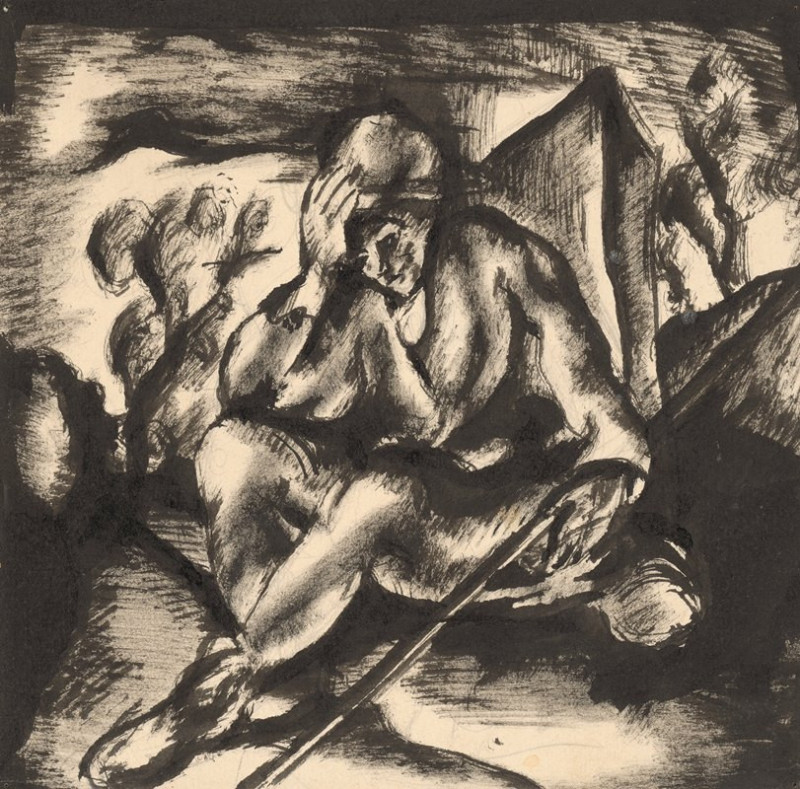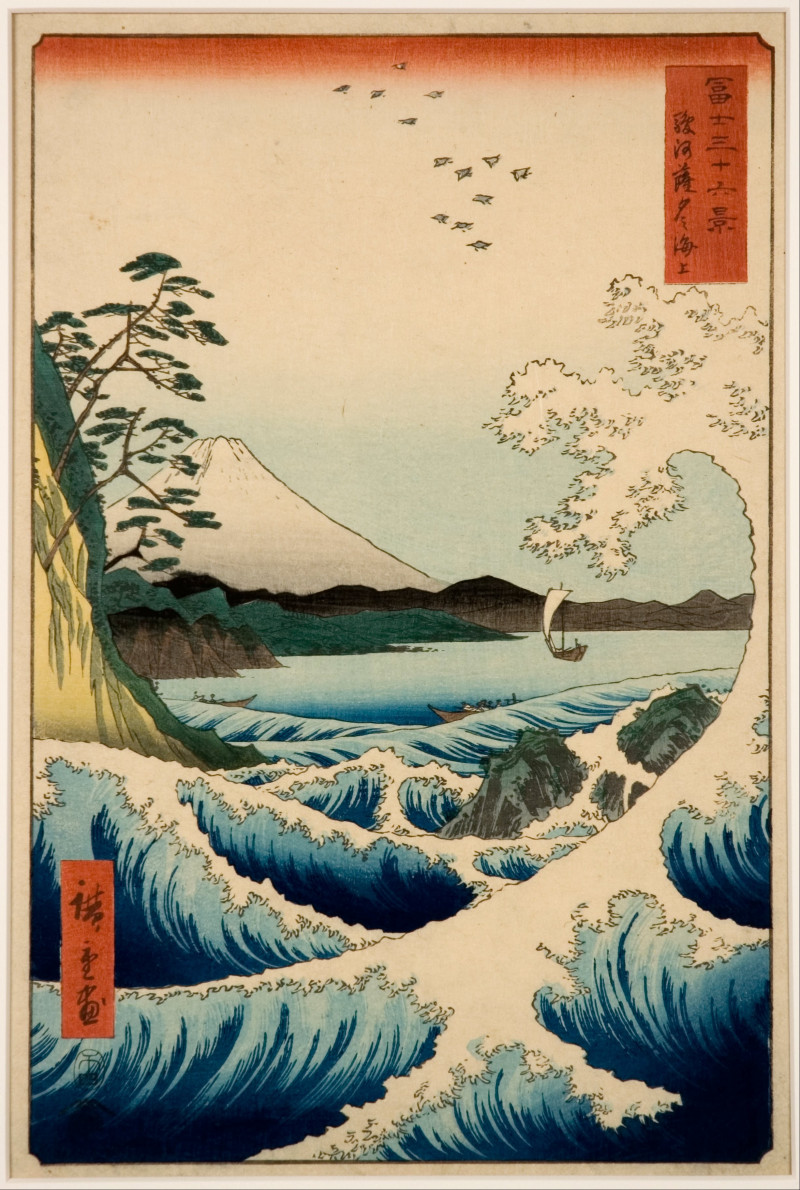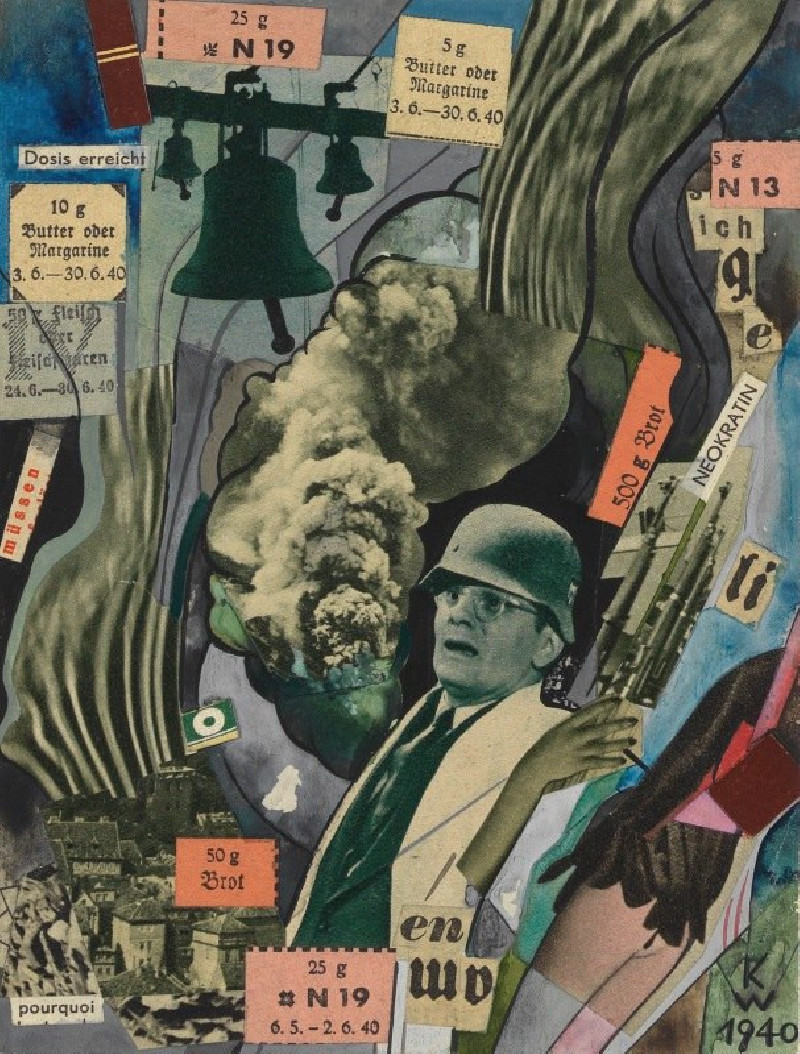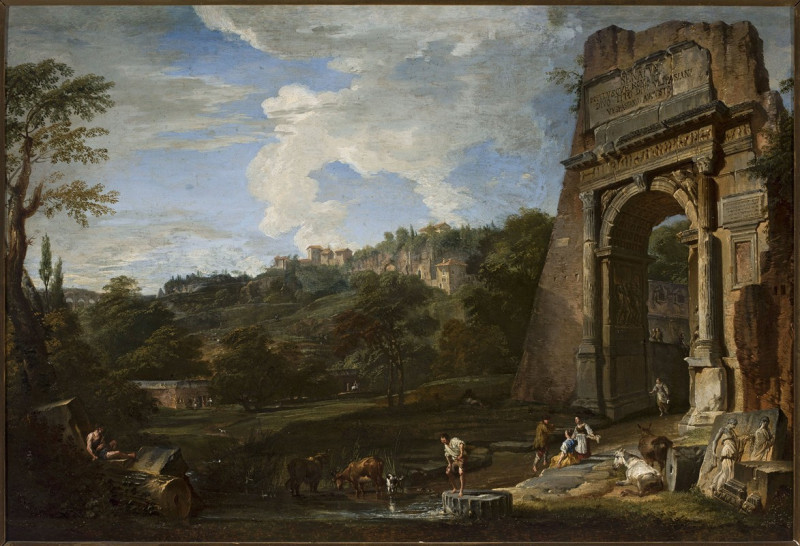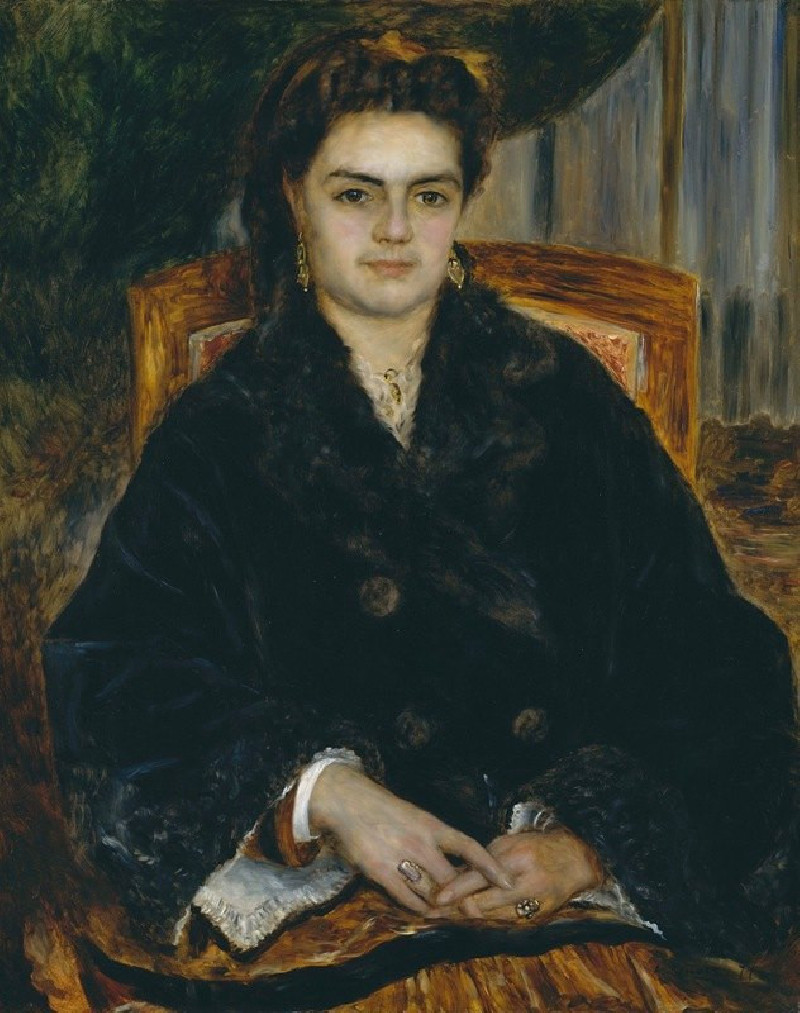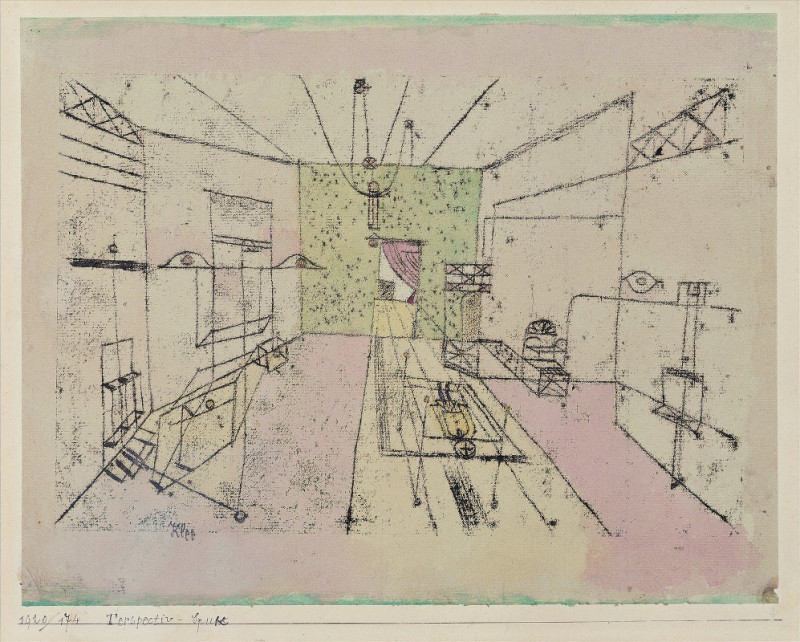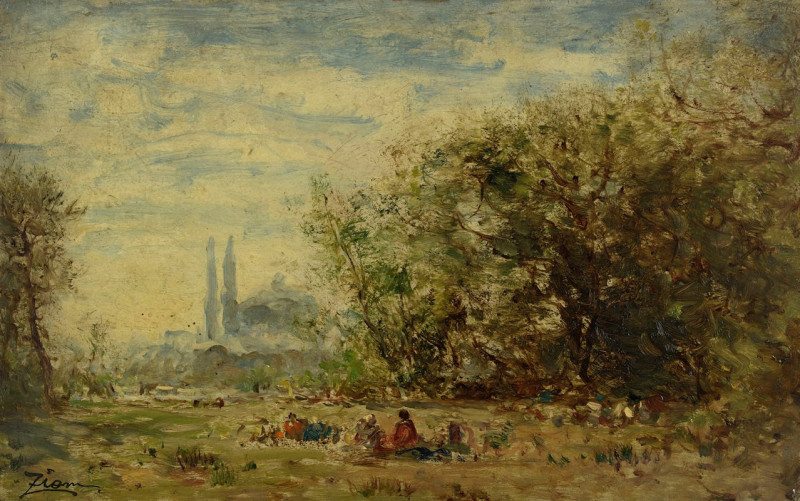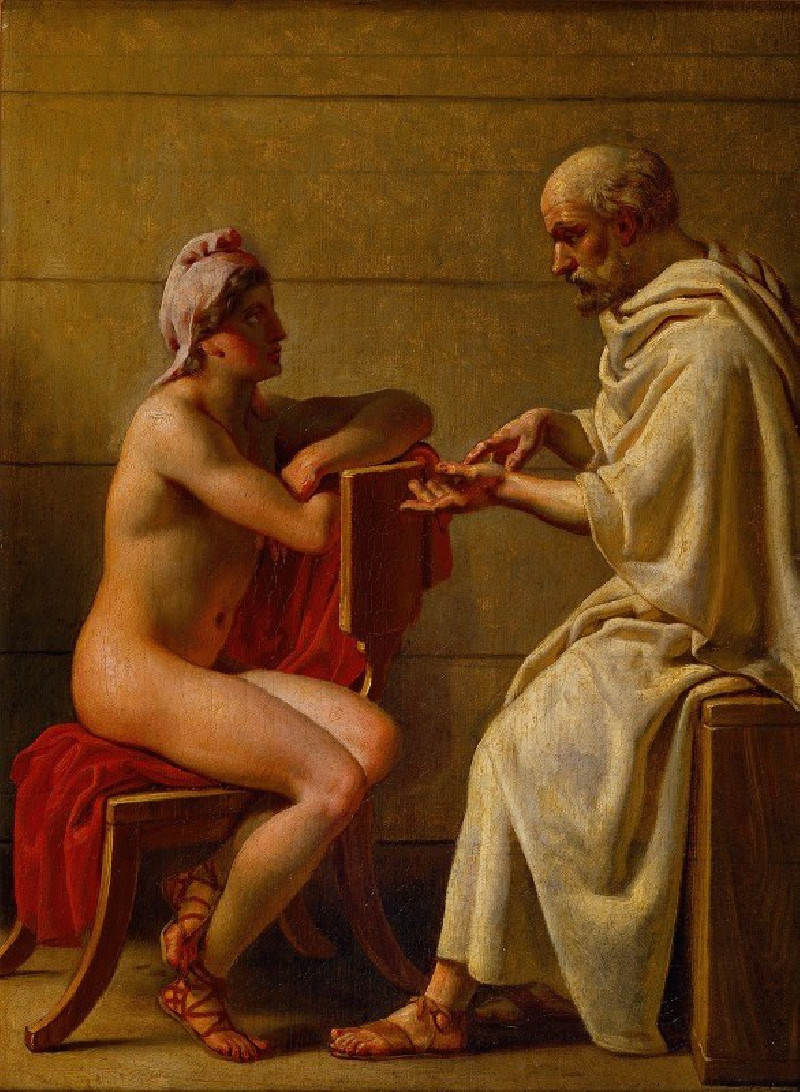The Funeral
Technique: Giclée quality print
Recommended by our customers
More about this artwork
The painting titled "The Funeral" by Édouard Manet is a poignant depiction of a funeral procession. This artwork presents a somewhat gloomy and atmospheric scene set against a backdrop that suggests a historical or classical landscape, perhaps in Europe given the architecture visible in the distance. The somber tones overall enhance the solemn mood of the scene.In the foreground, a group of figures dressed in dark clothing, indicative of mourning attire, gathers around what appears to be a horse-drawn hearse. The hearse is positioned so that it commands attention, underscored by the clearer depiction of the horse and the driver compared to the somewhat loosely painted group of mourners.The landscape itself, broad and expansive, features gentle slopes and a variety of greenery, punctuated by sharp verticals of cypress trees, which are often associated with mourning and cemeteries. This choice of trees could be a symbolic reinforcement of the funeral theme.Interestingly, the painting juxtaposes the solemn procession with an almost serene setting; the sky, though cloudy and overcast in parts, offers glimpses of blue and lighter tones, suggesting perhaps a metaphorical hint of peace or an eternal journey beyond the immediate sorrow.Manet's brushwork is notably loose and impressionistic, contributing to an overall sense of movement and emotion rather than intricate detail. This choice of style may reflect the transient, fleeting nature of life and the inevitable passage of time, themes so often contemplated at funerals.
Delivery
Returns
Édouard Manet (1832–1883) was a French modernist painter and one of the first 19th century artists to paint modern life. His impressionist style is characterized by relatively small and thin brushstrokes that create emphasis on light depiction. Manet was one of the key artists in the transition from realism to impressionism, along with Claude Monet, Edgar Degas, and Pierre-Auguste Renoir. However, he resisted involvement in any one specific style of painting, and only presented his work to the Salon of Paris instead of impressionist exhibitions. His early masterworks, The Luncheon on the Grass and Olympia, created great controversy and served as a rallying point for other young painters.

